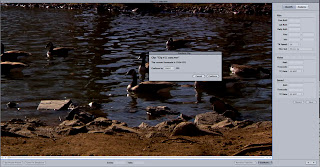Barry Green, one of the gurus over at DVXUser, and writer of several books on the DVX and HVX cams, has been doing a lot of digging around with the HMC150 to see just what you can do with it. He thankfully surmized that AVCHD was superior to HDV, and he also assumed through his testing that 720p on this camera was indeed the way to go to the maximum bang for the buck. However one thing kept nagging at him - color sampling:
"With the HMC150's AVCHD format, the frame gets resized and then the color gets cut to 1/4 the resolution (using 4:2:0 color sampling, like HDV or XDCAM-EX or XDCAM-HD). Which means that on a 720p frame, you get 1280x720 of brightness, and 640x360 of color. Whereas with 1080p mode, youll have a 1920x1080 frame, which may only have 1440x810 worth of detail, sure, but -- the chroma sampling will be at 1/4 the res of the full frame, meaning 960x540 of chroma. Well, that's a big difference, right? 640x360 = 230,400 chroma samples, vs. 960x540 = 518,400 chroma samples, or about 2.25x as much chroma...Check out the thread for more thoughts and observations from Barry. I would think that if you transcode to ProRes you should see identical file sizes in either 720 or 1080 since the camera uses the same data rate for both, but I'm going to test this for myself and see. So assuming nobody debunks this theory, I guess I'm going to start shooting in 1080p now instead of 720p. Might as well get every bit (literally) you can out of this camera!
The question then becomes: would you gain much by shooting in 1080 mode and downconverting to 720? You wouldn't gain much of anything in terms of overall image resolution, but you'd more than double your chroma res... So, does it make a difference? Um, well, yeah."
